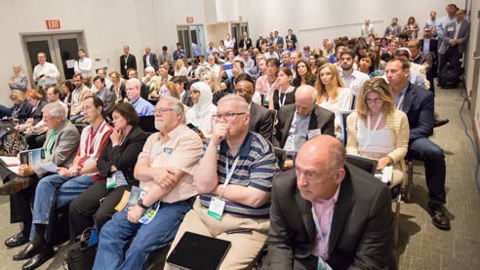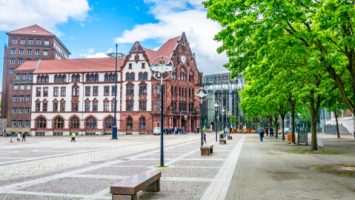
There are currently 60 million streetlights in the US. By 2026, 65% of those will be networked which has profound impacts on how cities work. It’s a lot more than just lighting.
A panel at the Smart Cities Connect Conference & Expo titled “Connected LED Streetlights – Economics and Smart City Potential Explored through City and Utility Deployment Case Studies” explored the latest research from Northeastern Group and presented case studies from industry pioneers.
Scotty Hutto, Lighting Services Business Unit Manager for Georgia Power spoke along with city of Harrisburg, Pennsylvania City Engineer, Wayne Martin. Ben Gardner, President, Northeast Group presented the firm’s research. Jack Hanley, Telensa’s Vice President of Sales for North America moderated.
The case was certainly made on how connected street lighting provides a simple, low-cost option for smart city applications. Through LED and connected technology, cities are able to control lighting functions through a single, centralized platform. This saves money including staff time in maintenance and reduces operational headaches. In addition, this vertical real estate provides a physical location to place data-collecting devices like sensors and cameras. Not all of these devices need to be utility related. For example, light poles can provide placement for small cells, which are briefcase-sized attachments that boost network connectivity capacity. ShotSpotter is another sensor solution mentioned that monitors gunfire and integrates with the city’s first responder platform.
One of the key benefits for cities of LED and connected streetlights is financial. Martin (Harrisburg) stated, “It’s already paid for itself in terms of the maintenance project for 6000 street lights.” Hutto (Georgia Power) mentioned this is a key strategy for the state. “More than 200,000 of our 400,000 roadways are converted to LED and we are on the way to 900,000.” As utilities struggle with a business model that incentives consumption, utilities are working to get smarter about how they can continue to thrive in a dynamic marketplace where cities are invested in saving energy and saving money. For Hutto, it is all about asset management.
Telensa is deeply invested in the Internet of Things has been innovating in the connected technology space for the past 20 years in cities across the world. They operate approximately 70 networks in 8 countries. Their technology has enabled cities to better monitor their air quality and rainfall, changes in traffic flow and help city leaders become better custodians of their own data.
All of the panelists acknowledged that this is a time of great change, and great opportunity. Local leaders can be confused about when is the right time to invest in technology and at what scale. Hutto answered this question with confidence when he said, “People ask me all of the time how they can anticipate the bottom of the price curve and the top of the tech curve. Technology is always changing. Get in as soon and you can and upgrade as you go. This is just the way of the new world.”
LED and connected streetlights are illuminating the way for smart cities in the US. They are physical assets with a tangible benefit that offer cost savings and even revenue generation. And don’t assume that it is only large metropolitan areas that can afford the capital expenditure. Sure the city of San Diego recently announced the largest city-based IoT platform on the planet. Smaller, more nimble cities like Harrisburg and smaller cities in the state of Georgia are also making major strides in the area of networked lighting.
Conversations like the one had at the Smart Cities Connect Conference & Expo where industry analysts, private sector innovators, utilities and city leaders deliver the kind of insights needed to advance this important sector. Perhaps streetlights have been high jacked, as Telensa’s Jack Hanley suggested, but no one seems upset about it – in fact it appears that everyone is thrilled.


